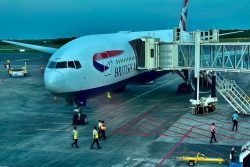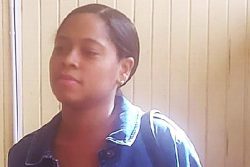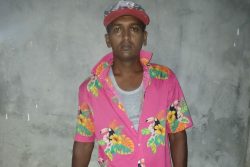The government could explore using the funds paid by miners as environmental bonds to rehabilitate the degraded Konawaruk River, Administrative Coordinator of the Guyana Gold and Diamond Miners Association (GGDMA) Colin Sparman has said.
“The bond is there earning interest,” he told Stabroek News adding that there are “millions of dollars” in the fund. Many miners do not collect back these sums, he said, adding that maybe the government could explore using them to rehabilitate the damaged Konawaruk River. Under mining regulations, medium-scale miners are required to post an environmental bond of $100, 000 before commencing mining.
Stabroek News reported earlier this month that the Konawaruk River is still heavily silted more than a decade after attention was first drawn to the degraded state of the waterway. It had previously been branded a “dead” river – incapable of supporting aquatic life but this has drawn varying views. “It would be difficult to say that without carrying out a proper assessment,” Dr David Singh, the head of Conservation International-Guyana had said. He had pointed out that the period for which the river has remained in a heavily polluted state ‒10 to 15 years – is more than the lifespan of aquatic species.
Former head of the GGMC William Woolford, who is now a consultant in the mining industry, however, was adamant that the Region Eight river is not dead. And Major General (rtd) Joseph Singh, who first expressed concern about the state of the river over a decade ago, has said that there is need for a technical evaluation to determine the extent of the damage to the Konawaruk River.
In a response to the Stabroek News articles, Minister of Natural Resources and the Environment Robert Persaud has said that the claims about the state of the Konawaruk River are of concern to him. He had said that mining and environmental protection officials will soon visit the Konawaruk River to check on its condition.
When contacted on Friday to ascertain whether the team had gone to check on the river, Commissioner of the Guyana Geology and Mines Commission (GGMC) Rickford Vieira said that he could not say. “I know the GGMC has people there,” he said referring to the GGMC’s sub-mining station at Mowasi. However, as to whether additional personnel had been sent, Vieira said that he had no knowledge of this.
Meantime, Sparman said that the issue of the degraded state of the Konawaruk River has not been raised at the level of the GGDMA executive. Asked whether the association was concerned about the state of the river, he responded that there are regulations in place to deal with these issues. “If the authorities want to stop mining in the area, they could stop it,” he said, adding that it is something for the GGMC and the Environmental Protection Agency to deal with.
The environmental bond has been criticized as being inadequate for rehabilitating mined-out land in the past and Sparman said that a review done by the ministry had said that it would cost about $7 million to reclaim one acre of mined-out land. This sum, he said, is unrealistic.
“We’re not against the review,” he emphasized, while also saying that the environmental bond should be fair and meaningful. Pressed as to whether the $100 000 sum is adequate, he said that “I can’t really say it is inadequate.” He said that maybe the $100 000 could work but reclaiming would have to be done in a different way. He said that the entire issue cannot be looked at in isolation, drawing an analogy with the fitness for a vehicle.
Sparman said that not all rivers are like the Konawaruk. “Maybe you could give Kowanaruk the priority,” he said.






